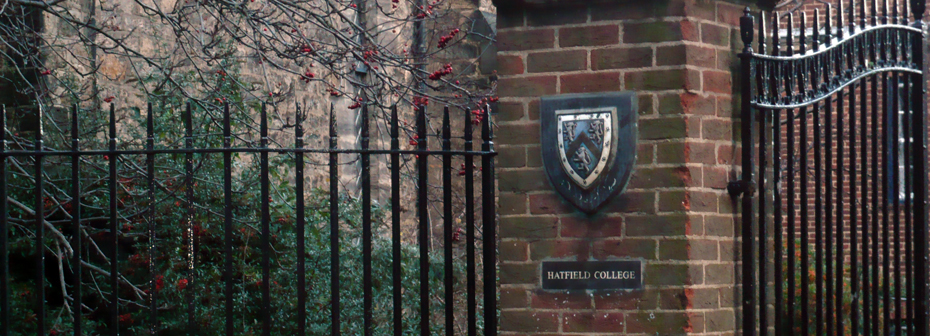Hatfield College
Hatfield College is the second oldest of Durham University's Colleges. It was established in 1846, and originally known as Hatfield Hall. To find out more about the college today, visit the Hatfield College website.
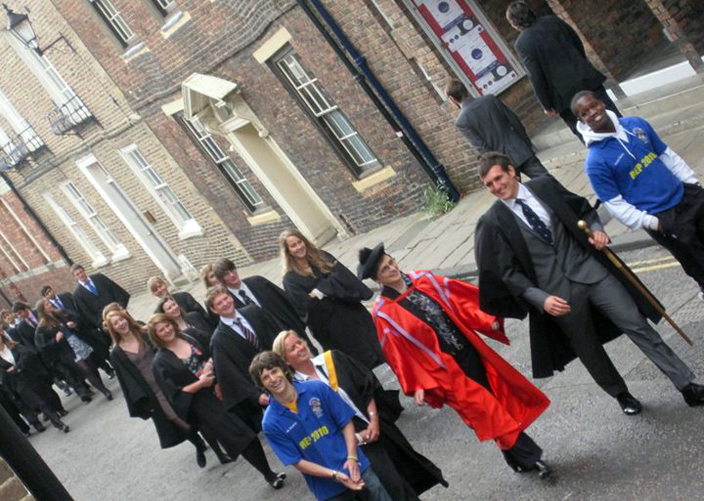
First-year Hatfield students processing to the Cathedral for matriculation, the ceremony celebrating the beginning of university life, led by the Acting Master, the Bursar, the Senior Man, and Fresher's Representatives.
The College Namesake: Bishop Hatfield
The college was named after a fourteenth-century Durham Bishop, Thomas Hatfield, whose architectural contributions to Durham were significant. It was Hatfield who built the Castle Keep, as well as the Bishop's throne in the Cathedral. (The throne was intentionally constructed to be higher than the seat of the pope.)
It was under Hatfield that many of the privileges of the Prince Bishops were formalised, as was their status as practically autonomous leaders. During Hatfield's time, for example, an old dispute arose between himself and the Archbishop of York, who claimed that he could visit Durham whenever he wanted. Hatfield, like his predecessors, was of the opinion that the Archbishop of York couldn't just announce that he was visiting - he needed to request an invitation. The dispute was referred to the king, who ruled in Hatfield's favour, ascertaining the Bishopric's importance.
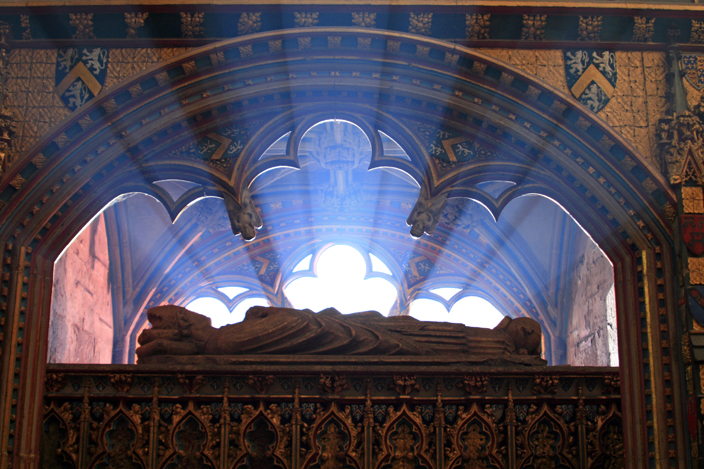
The tomb of Bishop Hatfield lies under the throne built by him in the Cathedral.
© Michael Sadgrove
A London Townhouse
Hatfield's prominence was such that he built a townhouse, Durham House, on the Strand in London, in one of the few locations that offered a good view of the river. The main advantage of Durham House, though, was that it was very close to Westminster Palace, the king's main residence. Hatfield's importance at court, as 'the first, or among the first,' at royal functions, gave Hatfield College its motto, 'Vel Primus Vel Cum Primis, which means the same in Latin.
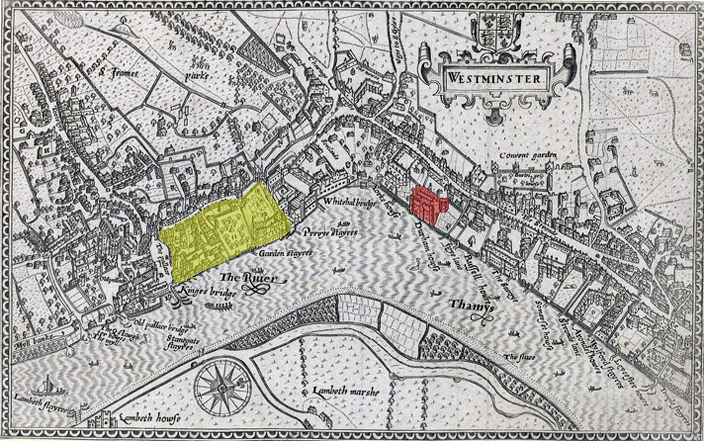
A sixteenth-century map showing the area of Westminster in London, where Hatfield built his townhouse (indicated in red). The king's main residence, Westminster Palace, would have been located in the area shaded yellow. (The map was produced by Norden in 1593.)
College Buildings
The oldest of the college buildings is what is today the dining room, which probably dates back to the 17th century. In the 18th century, the building became a coaching inn, The Red Lion - a stopping point for coaches on the long journey between London and Edinburgh. Coaching inns like the Red Lion remained important until the 19th century, when the construction of the railways made train journeys a more efficient means of transport.
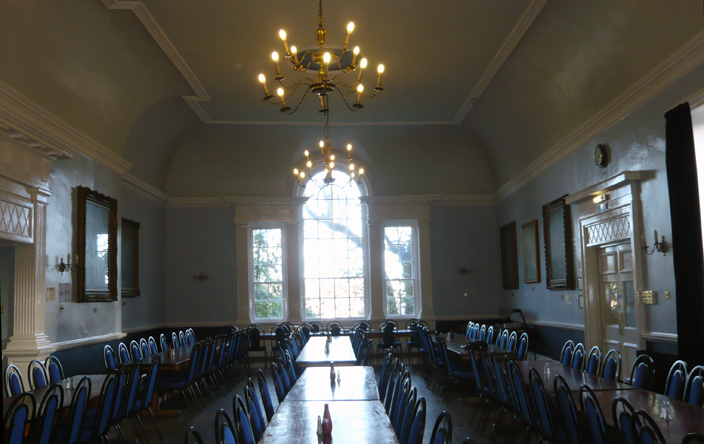
The dining room at Hatfield College, formerly the Red Lion Coaching Inn.
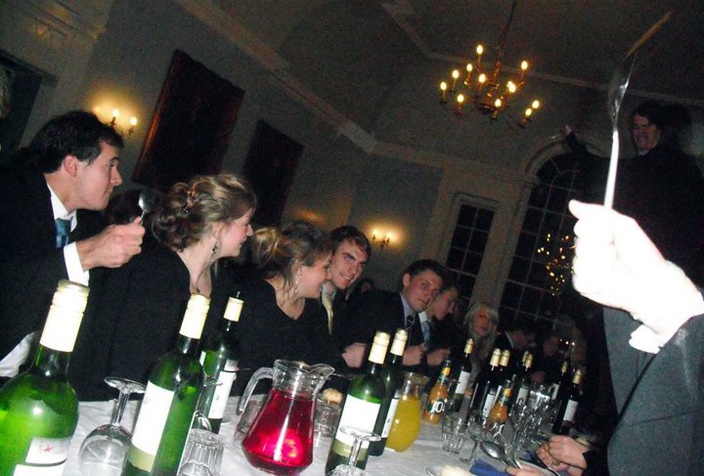
The Hatfield dining room in use at a college formal dinner. The students in this photo are spooning, a Hatfield college tradition where the undergraduate students call the members of the Senior Common Room to dinner by banging their spoons on the table to different rhythms.
The Story of a Fireplace
The 17th century fireplace currently in the Mayor's Chamber in the Durham Town Hall originally came from the building which is now the Hatfield dining room. This features a portrait of Charles I and his queen, Henrietta Maria.
The fireplace has an interesting history: In 1845, the Red Lion building was put up for sale, but the owner, Walter Scruton, stipulated that the fireplace, then in his bedroom, was not to be included in the sale. He presented it to the Corporation of Durham, but kept the two portraits for himself. The portraits passed then on to Scruton's brother-in-law. Twenty years later, in 1865, they were put up for sale. They were purchased by the Mayor of Durham put back into the fireplace.
It is thought that the portraits were a gift from Charles I to the Bishop of Durham Thomas Morton (Bishop from 1632-1646), who hosted the king in Durham Castle.
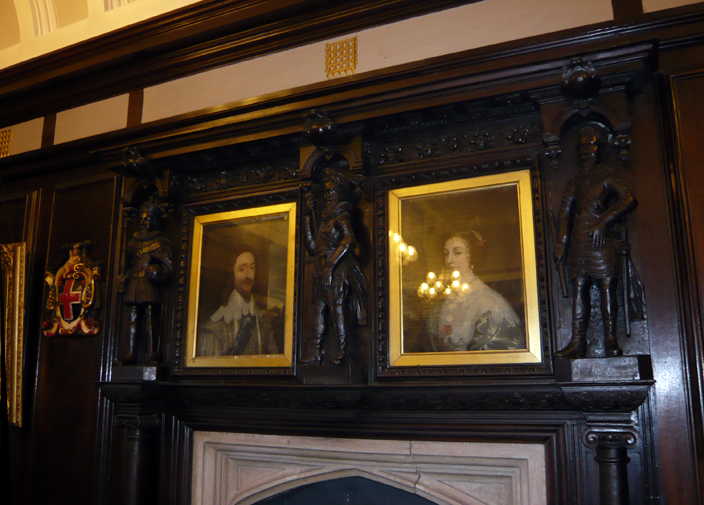
The mid-seventeenth century fireplace now in the Mayor's Chamber of Durham Town Hall came from the building now housing the dining room of Hatfield College. The two portraits are of Charles I and his queen, Henrietta Maria.
University Accommodation: The First or Among the First
True to the college motto, it was the first in England to provide university accommodation in the modern sense of the word: an arrangement where students would be provided with furnished rooms and meals for a flat fee. Previously, students furnished their own rooms. Thus, it was at Hatfield that the idea of a college dorm was born.
As such, the first purpose-built buildings were constructed in 1849 by Anthony Salvin, a familiar name in Durham, at a cost of 4,000 pounds.
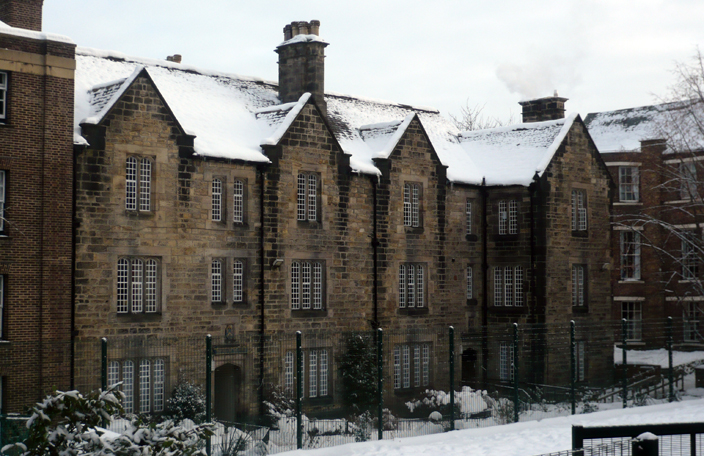
View of the accommodation block designed by Anthony Salvin at Hatfield College.
The College Chapel
Built in 1854, the chapel was another first building - the first purpose-built university chapel in Durham. Its architect was James Turner, also the chaplain of Bishop Cosin's Hall.
As was fashionable at the time, two of the stone bosses on the building are carved with recognisable faces: one of Bishop Van Mildert – the founder of the university – and the other warden Thorpe, the first vice-chancellor. The university library, constructed a few years later, continued the same tradition.
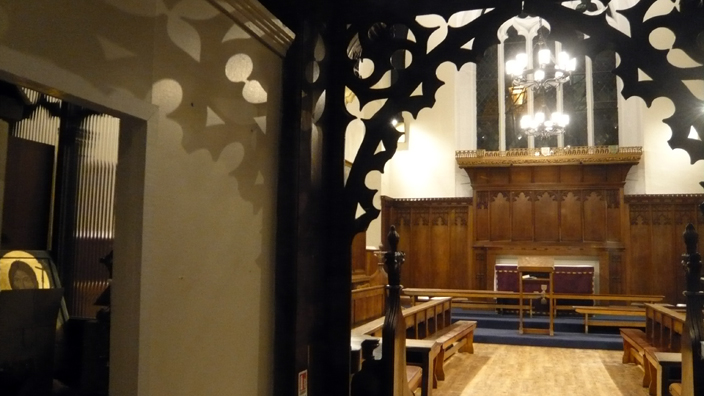
Interior view of Hatfield College Chapel, looking towards the altar.

